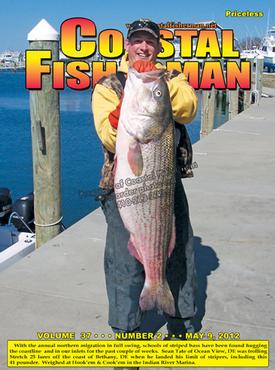


Article by Pat Schrawder
 AUTOMATIC IDENTIFICATION
AUTOMATIC IDENTIFICATION
SYSTEMS (AIS)
Every season there are certain items that seem to “catch on”. The progression is almost always the same. First one or two manufacturers will come out with a product and the price is usually fairly high. As seasons progress, more and more companies will jump on board until it seems like all the major players are making a version of it. At that point, the prices start to drop and then we can really compare features versus price and reliability. And so this season, we take another look at AIS.
Since 9/11, the Federal Communications Commission has set standards for and has required that certain vessels be equipped with AIS to support Homeland Security. Simply put, AIS is a shipboard broadcast system operating in the VHF maritime band that provides “real time” detailed information between vessels and/or shore-based stations allowing you to identify and track certain vessels in the surrounding area providing collision avoidance data. It requires a VHF AIS antenna, an AIS device (a "receive only" Class B unit or a "send and receive" Class A unit) and a GPS. The Class “B” unit allows you to receive detailed information about other Class “A” AIS equipped vessels but will not allow other vessels to “see you”. The Class A device will allow you to both “see” other AIS equipped vessels and for AIS equipped vessels to “see you”. Certain vessels are required to be equipped with Class “A” AIS transponders but the system as currently implemented only works for those that are equipped.
When an AIS system is installed on a vessel, several items of data are programmed into the unit to be transmitted via the system. Among those items are: ship’s name, type, call sign, IMO number, length and beam, antenna location, draft, cargo information and destination. The GPS interfaced with it will calculate and display the vessel’s ETA (estimated time of arrival). The incoming information from other vessels will be displayed in rotation on your AIS receiver, your radar screen, if it is interfaced, or other screen. Depending on the brand of equipment, the vessels show up on the screen as little mosquito looking marks or other symbols. Periodically the information is updated and, if the vessel is under way, your AIS system “tracks” its position, course over ground, speed over ground, gyro heading, rate of turn, navigational status and direction of travel. It will also check for dangerous targets within a safe zone that you have set up, sounding an alarm. AIS installed in Coast Guard stations aids them in implementing Homeland Security by increasing their awareness of vessels in the water and especially of those entering US ports. A “tail” on the target displayed on your display screen will indicate the direction the vessel is traveling.
The advantage of AIS is that the target will be located and identified regardless of whether or not it can be “seen”. For example, if you and another vessel are hidden from each other’s view either because you do not have radar or because there is significant land mass between the two of you, the VHF transmitted signal of AIS will still show your presence. AIS also gives you a lot of information about the ships in your area that you may “see” with radar but which will not have all that data set.
Most of the major manufacturers now offer one or more AIS units. You can find product from SiTex, ACR, Furuno, Simrad, Icom, Garmin and Raymarine to name a few and ranging in price from $299 to over $4,000. Standard Horizon even makes one that is built into one of its VHF radios but its small display screen makes it one of my least favorite.
Obviously, with that much of a price spread, you can expect to find a wide range of features that are in some and not others. There are two big items to determine right off the bat. See if the unit is Class A or Class B and then see if it has its own display screen or if it is a so-called “black box” that connects to your other display device such as your cartography plotter and/or radar. Beyond that they all work on the same basic principle, so you are paying for additional features and name brand confidence.
If you have a computer, here is a great web site you can visit that actually monitors vessel traffic and displays it on-line. Their site is: http://www.marinetraffic.com/ais/. Check it out. It will give you a very clear idea of what AIS offers you and will be interesting to view even if you never add AIS to your equipment package. You will find that there is a lot more traffic out there on the water with AIS than you imagined and it is expected to increase more as seasons go by.
I would expect that at some point they will need to develop another frequency for large ocean going vessels because there will be just too much out there.
Pat and her husband, Larry are owners of L&L Marine Electronics on Golf Course Road in West Ocean City, MD.